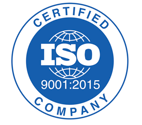
IVDR (In Vitro Diagnostic Regulation) impacts all in vitro devices sold in EU markets. Learn what this means for you.
Medical device regulations are undergoing a period of substantial change at a level never experienced before by this growing industry. ISO 13485:2016, EU MDR, MDSAP, and MedAccred are all garnering the attention of Quality and Regulatory Compliance leaders worldwide. If that weren’t enough, the industry now must also tackle Regulation (EU) 2017/746 of the European Parliament and of the Council on in vitro diagnostic medical devices, otherwise known as IVDR.
IVDR, which was published in May 2017, repeals the EU’s previous directive on in vitro diagnostic medical devices (98/79/EC). It carries a 5-year transition period, thus requiring manufacturers of currently approved in vitro diagnostic medical devices to comply by May 26, 2022. Once the transition period has ended, all in vitro devices will need to adhere to IVDR in order to be sold in EU markets. This may seem like a long way off, but with 113 Articles and 15 Annexes, the IVDR requires significant changes that will make the transition process for most companies very time-consuming. Consequently, manufacturers need to start addressing IVDR now to ensure they don’t end up in crisis mode come 2022. Here are 5 of the more noteworthy points addressed in the IVDR:
- A New Classification System – The new medical device regulation adjusts from the previous list-based classification approach to a new rule-based classification system focused on the intended use of the product, which aligns better with a continuously growing and maturing industry. A risk-based approach is now utilized, with risk categories ranging from Class A (lowest risk) to Class D (highest risk).
- Changing Certification Requirements – Previously, the classification rules referenced above were applied only to a specific list of certain products. Under the IVDR, however, the classification rules apply to all in vitro medical devices, with no “grandfather” clause. Therefore, a much higher percentage of companies will require certification from a notified body, meaning that most companies who employed self-certification in the past will no longer be able to do so.
- Assigning Responsibility – The IVDR requires companies to identify and document at least one individual responsible for regulatory compliance. These individuals must clearly demonstrate the necessary background and expertise to carry on such responsibilities in an effective manner.
- Enhanced Clinical Documentation – Much more stringent clinical evidence, including post-market surveillance, needs to be gathered, depending on the risk classification assigned to each product. Clinical studies addressing performance and safety need to be documented, and manufacturers must establish and continuously update a performance evaluation plan, with clinical evidence formally documented in a performance evaluation report.
- Expanded Scope – As compared to the previous directive, the IVDR has an expanded scope, which will greatly increase the population of regulated in vitro medical devices. The definition of an in vitro medical device has been reworked in the IVDR and now incorporates genetic testing and other tests concerning predisposition to a medical condition or a disease.
As explicitly stated in the IVDR, this new medical device regulation “sets high standards of quality and safety for in vitro diagnostic medical devices in order to meet common safety concerns…”. The previous directive was widely viewed as stale and outdated, and therefore a change to a new regulation, more in touch with today’s medical device market, was necessary. Due to the volume and complexity of the new medical device regulation, many manufacturers have already begun conducting their gap assessments to determine specifically where their current processes fall short as compared to the new requirements. From there, Quality and Regulatory Compliance leaders will need to determine the specific action steps, and the resources needed, to achieve compliance in a timely manner. The key to your successful transition to IVDR – start early, plan effectively, and get the help and expertise you need.







